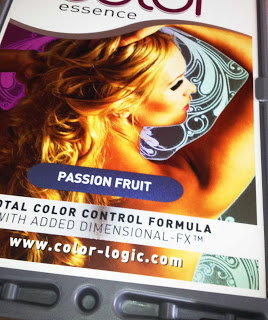Digital printing inks are similar to other inks and paints. All of these products consist of two basic components: a colorant (dye or pigment) and a liquid carrier or vehicle. The varieties of digital printing inks include aqueous inks, solvent inks, ecosolvent inks, latex inks and UV-curable inks. With so many choices available in wide format printing, considerations in ink selection include compatibility with the substrates, application, durability, brightness of color and cost.
If an application requires longevity, pigment inks are much more durable than dye-based inks. Those pigments that that fade after a short period of time are referred to as “fugitive colors”. While pigments are viewed a producing less vibrant images, improvements in ink technology has expanded the color gamut. For outdoor applications, such as vehicle graphics and outdoor advertising, pigmented inks are usually preferred.
In the digital printing field, pigment inks, however, have been associated with metameric color shifts. Advances in ink formulation have reduced many of the problems associated with metamerism. Dye-based inks, by comparison are less metameric.
The advantage of a dye-based ink is its bright colors. For this reason, these inks were selected for indoor applications, such as P.O.P. posters and displays and photographic prints. The downside of dye-based ink was that you sacrificed durability. While fade resistance has improved greatly with new color formulations, the more vibrant dye-based inks generally exhibit a much lower resistance to UV light.
Aqueous Inks. Aqueous inks were popular in the Point-Of-Purchase industry for printing posters. Most of these inks are dye-based, although today pigment inks are also available. The dye-based inks produced very vibrant colors, which were perfect for indoor applications. Printed images are quite often very close to photographic quality, which is why photographers have preferred these printers to output their work. The shortcomings of the dye-based inks were that their durability was limited and not suitable for outdoor applications. In addition, print media required top coatings to achieve good image reproduction and ensure good adhesion to substrates, such as vinyl films.
Solvent Inks. Many of the solvent inks were popular, because they provide good adhesion to vinyl films and banner substrates. These oil-based pigmented inks also provided five to seven years of outdoor durability. These printers, however, generate high levels of VOCs and require ventilation.
Eco-solvent Inks. Eco-solvent inks were developed as a more used friendly alternative to the strong solvent inks for shops that don’t print every day. These light solvent inks, which utilize a mineral oil as a vehicle, are less likely to clog than the fast drying strong solvent inks and require less maintenance. For the most part, you can print on the same types of media that you use for the solvent inks. There are a variety of ink sets with expanded ranges of color that are available in the ecosolvent category. These pigments inks provide good durability for outdoor applications, such as vehicle graphics, and good image reproduction for indoor applications, such as P.O.P displays, tradeshow and museum graphics. The downside of these inks is that they don’t dry as fast as the solvent. That means that if you need to laminate the prints, which is often the case for outdoor applications, you will need to wait for the ink to outgas, which usually requires a 24-hour waiting period before lamination.
Latex Inks. Latex inks combine the best of both worlds. Because the inks utilize pigment colorants, which provides great outdoor durability. In addition, the inks are water based, so they dry quickly, which minimizes production delays. What’s more, they adhere to a wide range of uncoated media, including paper, vinyl films, heat transfer films and banner material. Unlike solvent and ecosolvent inks, there emit no VOCs. One problem with these printers is heat. To dry the water-based inks these systems use high heat. This can cause warping problems with heat sensitive media.
UV-Curable Inks. Another printing ink that produces extremely low VOC emissions is UV-Curable ink. When exposed to UV radiation, these inks polymerize and cure instantly. None of the ink ingredients evaporate into the atmosphere. 100% of the ink printed on the substrate remains on the substrate. The pigment is encapsulated within the cured film, which provides a heavy and durable deposit of ink. In addition to being environmentally friendly, these inks adhere to a wide range of substrates including rigid substrates and films. The quality of printing is suitable for indoor applications, such as P.O.P. displays as well as for outdoor applications, such as vinyl graphics and banners.
Conclusion. Over the years, ink manufacturers have made significant improvements to both dye-based and pigmented digital printing inks. Dye-based inks have become more durable. Pigmented inks have become more vibrant. Nevertheless, for outdoor applications, pigmented inks are still your best choice.



